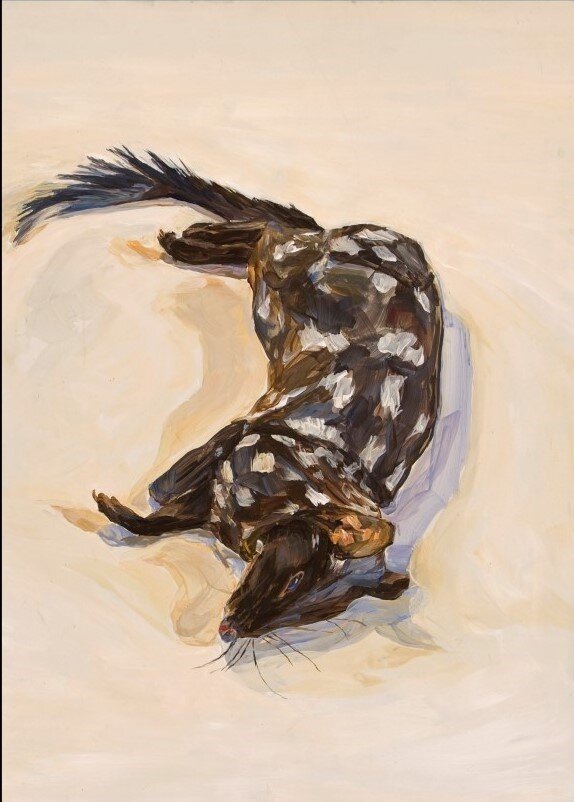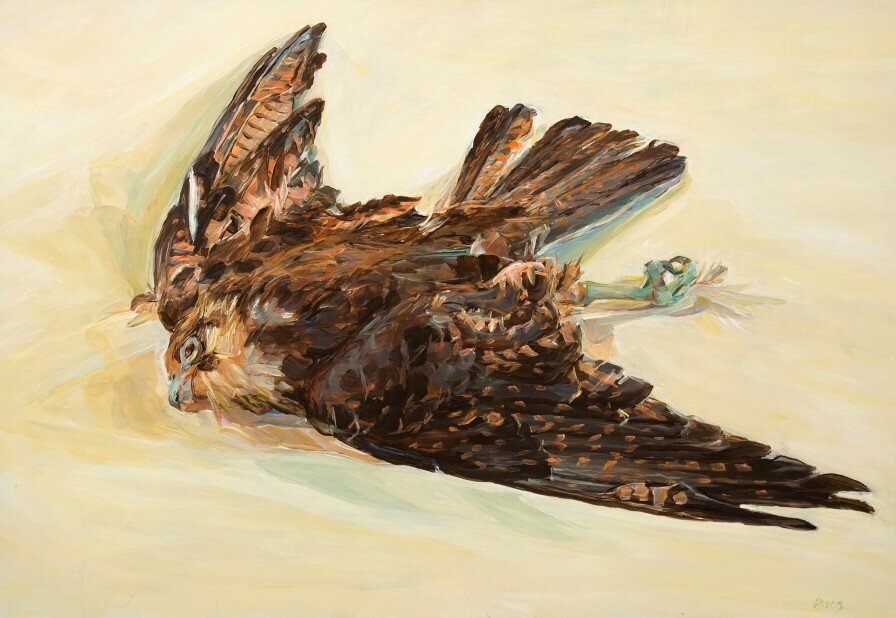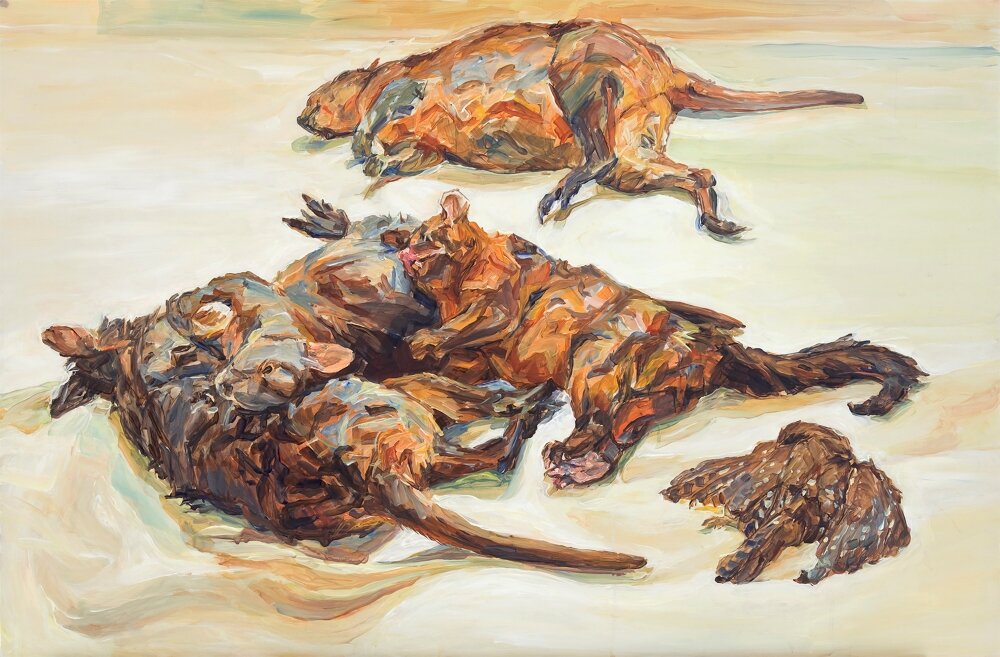Van Diemens Memento Mori.
The Van Diemen's Memento Mori Series was produced in response to roadkill, a disturbing contemporary phenomenon particularly prevalent in Tasmania. The works intent is threefold:- as a protest, as a record to provoke thought about the ramifications of mans ever expanding footprint on the planet, and to challenge western cultures reluctance to face death.
Finalist 2014 Waterhouse Prize, SA, 'Friday 27th September 2013' depicts three Bennett's Wallaby, one common Brushtail Possum and a Southern Boobook.
Friday 27th September 2013, Van Diemens Memento Mori.
acrylic on masonite 60 x 92 cm
Finalist Waterhouse Natural Science Art Prize 2014
Working from life in the studio initially from individual specimens, then small groups, finally, to give a sense of the quantity, Manning conducted early morning 'sweeps' collecting all the previous nights victims. Placed on plastic sheets and white paper on the studio floor and working fast to beat the changes of decomposition, she painted that specific days tally. At the time an average of 32 animals an hour were dying on Tasmanian roads. A common local response to road kill was “ It just shows how lucky we are to have so much wildlife.’’
Influential on the artist was Nolan's work responding to outback Australia in extreme drought. Described as compelling us to see and realize that which we wish to ignore and holding a mirror that we may see and realize ourselves, his depictions of twisted animal carcasses while disturbing and moving are also hauntingly beautiful.

Brushtail Possum. acrylic on masonite 42 x 60 cm

Eastern Quoll. acrylic on masonite 42.5 x 30 cm

Brown Falcon II. acrylic on masonite 42 x 60 cm

Two Tasmanian Bettong. acrylic on masonite 42 x 60 cm

Brown Falcon I. acrylic on masonite 42 x 60 cm

Tasmanian Devil. acrylic on masonite 42 x 60 cm

Tasmanian Bettong. acrylic on masonite 42 x 60 cm

Plover. acrylic on masonite

Rabbits. acrylic on masonite 42 x 60 cm

Tawny Frogmouth. acrylic on masonite 42 x 60 cm

Southern Brown Bandicoot. acrylic on masonite 42.5 x 30 cm

Brushtail Possum. acrylic on masonite 42 x 60 cm

Brushtail Possum. acrylic on masonite 60 x 42 cm

Tasmanian Native Hen. acrylic on masonite 60 x 42 cm
Installation of a grouping of works from the Van Diemen's Memento Mori series in the 2016 retrospective exhibition Selected Works at Moonah Arts Centre, Hobart, TAS.


